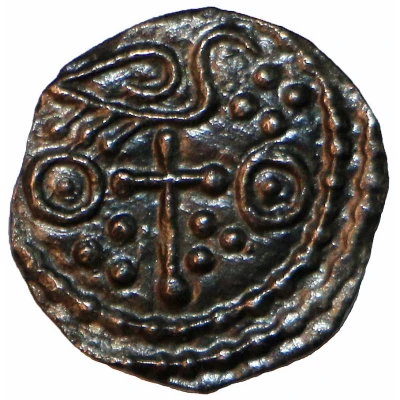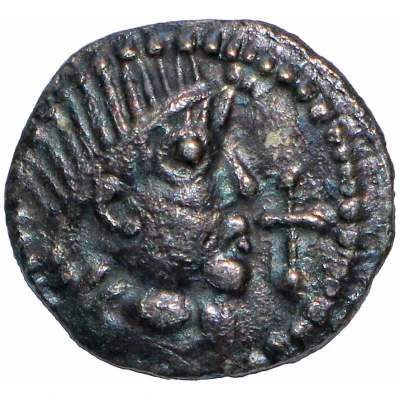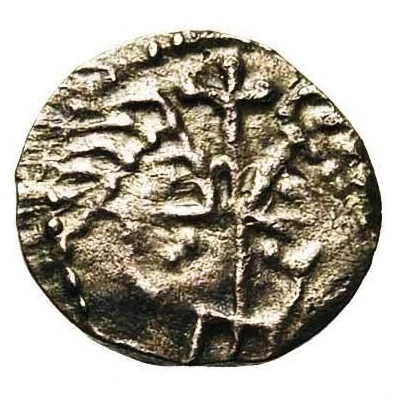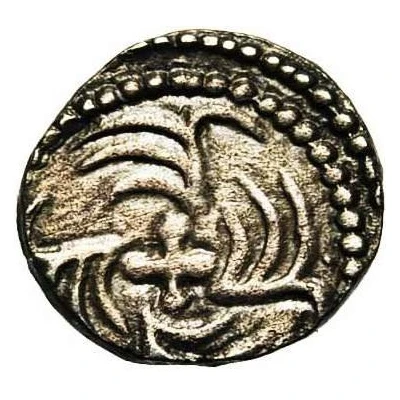


© John Conduitt (CC BY-SA)
Sceat Series J 'York'; Type
| Silver | 1 g | 12 mm |
| Issuer | Early Anglo-Saxon (Kingdoms of British Isles and Frisia) |
|---|---|
| Type | Standard circulation coin |
| Years | 710-760 |
| Value | 1 Sceat |
| Composition | Silver |
| Weight | 1 g |
| Diameter | 12 mm |
| Shape | Round (irregular) |
| Technique | Hammered |
| Orientation | Variable alignment ↺ |
| Demonetized | Yes |
| Updated | 2024-10-09 |
| Numista | N#345720 |
|---|---|
| Rarity index | 95% |
Reverse
Outline bird right over cross pommée, pellet in annulet either side, quatrefoil of berries before bird, bird has three tail feathers below, trefoils in lower angles.
Comment
Early Anglo-Saxon period (c.600-c.775), Sceatta coinage (c.675-c.760), Secondary Phase Sceattas (c.710-c.760), Series J ('York'), Type 85. Abr. 18.20Interesting fact
One interesting fact about the Standard circulation coin Sceat (Series J ('York'); Type 85) (710-760) from Early Anglo-Saxon (Kingdoms of British Isles and Frisia) made of Silver weighing 1 g is that it features a unique blend of Christian and pagan elements in its design. The obverse side of the coin depicts a cross, which symbolizes the Christian faith, while the reverse side features a stylized animal, which is a common motif in pre-Christian Anglo-Saxon art. This blending of religious symbols reflects the cultural and religious shifts that were taking place in Early Anglo-Saxon society during this time period.



